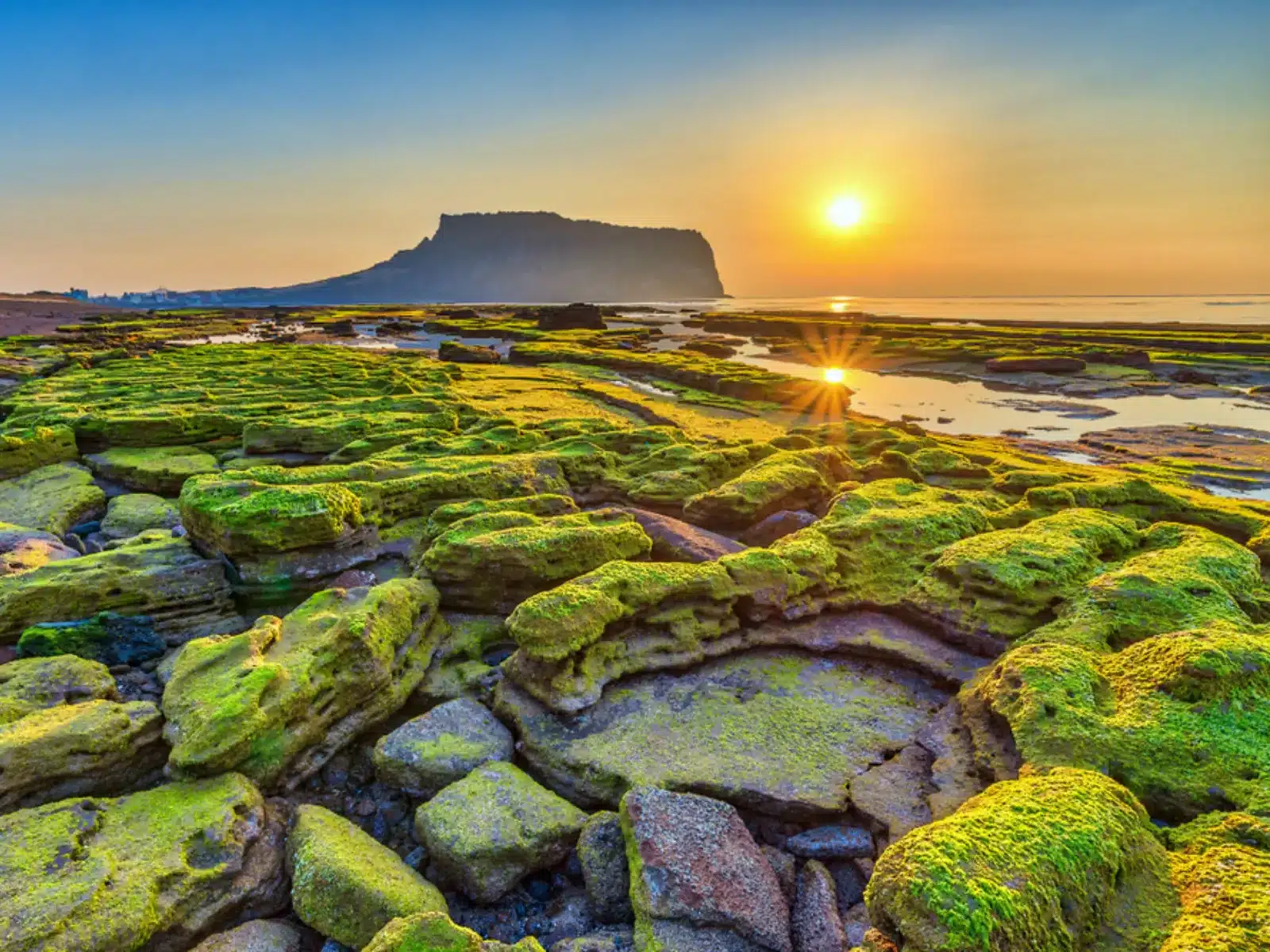TL;DR: Key Takeaways
- Jeju Island delivers spectacular volcanic scenery, hidden beaches, and a unique matriarchal sea-diving culture you won’t find elsewhere in Korea.
- Renting a car makes exploration flexible, but the bus system is robust for budget travelers.
- Summer is popular for beach lovers, but spring and fall are unbeatable for hiking and photography. Safety is high, but beach currents and sun exposure need caution.
- Plan for at least 3-4 days to see Jeju’s highlights, but a week lets you truly soak up the island life.
Jump directly to in-depth details.
What Makes Jeju Island a Must-Visit? (Direct Answer)
Jeju Island stands out as South Korea’s natural paradise—a volcanic landscape blanketed in tangerine groves, dotted with waterfalls, and surrounded by pristine beaches. As a frequent visitor and outdoor enthusiast, I can say there’s nowhere else in Korea where ancient customs (like the iconic haenyeo women divers) blend so seamlessly with modern comforts.
Whether you crave challenging hikes, peaceful coastal drives, world-class seafood, or quirky museums, Jeju’s diversity makes every trip feel new and personal. Most first-time visitors are wowed by how accessible, welcoming, and safe the island feels, even for solo travelers or families.
Deep Dive: Bucket-List Things to Do in Jeju (with Local Insights)
Hike Hallasan Mountain—Crown of Jeju
At the heart of the island, the dormant volcano Hallasan rises to nearly 2,000 meters. I trekked the Seongpanak Trail and was rewarded with panoramic crater views—worth the 5-hour climb. Spring rhododendrons and autumn colors are spectacular. Tip: Wear layers and reserve a permit for summit trails in peak season.
Hallasan National Park: Visit Official Site
Witness Haenyeo Diver Culture—Jeju’s Sea Women
I watched seasoned women divers free-dive for abalone and octopus. Their resilience is awe-inspiring. Visit the Haenyeo Museum and try to catch a live demonstration at seaside villages.
Explore Manjanggul Lava Tube—UNESCO Marvel
This 7.5 km-long lava cave is otherworldly! Only a 1 km stretch is open to visitors. Bring a jacket—it’s cool inside, and the volcanic stalagmites are surreal. See Visitor Info
Relax at Woljeongri and Hamdeok Beaches
The turquoise waters and white sand rival Southeast Asia. Early mornings are peaceful, and afternoons buzz with cafes and kite surfers. I love renting a board at Hamdeok during sunrise—the calm is magical.
Climb Seongsan Ilchulbong (Sunrise Peak)—For Breathtaking Vistas
Famous for sunrise, this tuff cone gives spectacular views of the Pacific. Arrive before dawn for the best photos. The paved path is brisk but steep—water and a hat are musts in summer.
Walk the Jeju Olle Trails
Inspired by Spain’s Camino, these well-marked coastal paths let you see old villages, volcanic formations, and endless flower meadows. Route 7 is stunning but challenging; beginners might prefer Route 1 for seaside charms and gentle terrain. Trail info: Jeju Olle Official
Sample Jeju Black Pork BBQ & Fresh Abalone
This local specialty, grilled over lava stone, is melt-in-your-mouth tender. Try Jeju’s specialty markets for legendary fresh seafood, tangerine juices, and hallabong pastries.
Discover Jeju’s Quirky Museums
From the Teddy Bear Museum to the unique O’sulloc Tea Museum, Jeju offers a playful break from nature. Great for rainy days or families.
How to Stay Safe in Jeju—Practical Tips
4. Emergency Numbers:
- Police/Fire/Medical: 119
- General Information: 1330 (Korean Tourism Emergency Hotline—English support)
Where to Stay in Jeju—Best Areas Accommodation Types
Jeju City—For First-Timers & Short Stays
Ideal for easy airport access and local nightlife. Options range from international hotels (like Hotel Leo, +82 64-746-2345) to affordable guesthouses.
Seogwipo—Best for Waterfalls & Southern Coast
This city is charming and less crowded. Park Sunshine Hotel (+82 64-730-7000) offers mid-range comfort near natural wonders.
Jungmun Resort—Luxury & Family Getaways
Home to top-tier hotels like The Shilla Jeju, luxury spas, and nearby attractions. Great for families or romantic trips.
Aewol & Andeok—Hippest Cafés and Ocean Views
Trendy with boutique guesthouses and seaside coffee shops. Dyne Oceano Hotel is a favorite for sunset lovers.
Budget-Friendly: Hostels & Hanok Stays
Find deals from as low as ₩13,000 (Browse Hostels). Pensions and guesthouses give a traditional feel and often include breakfast.
Money Matters: Typical Costs, Budgets & Money-Saving Tips
Daily Budget (mid):
- Backpacker: ₩40,000–₩60,000 ($30–$45) per day covers hostels, bus rides, and fast food.
- Mid-Range: ₩80,000–₩150,000 ($60–$110) for guesthouses, occasional taxis, and casual restaurants.
- Luxury: ₩200,000+ ($148+), including premium hotels, private tours, and upscale dining.
Money-Saving Tips:
- Buy a T-money card at convenience stores to get bus fare discounts and easy reloads.
- Eat at traditional markets for local flavors at bargain prices.
- Travel offseason (March–May or Sept–Nov) for lower hotel and tour rates.
How to Get Around Jeju Island
When to Go, How to Get There, & How Long to Stay
How to Get There:
- Direct flight to Jeju International Airport (CJU) from Seoul/Gimpo (1 hr 15 min), Busan, or cities like Hong Kong and Singapore. Airport Info
- Ferry from Mokpo, Wando, and Yeosu ports. Duration: 2.5–5 hours depending on route and sea conditions.
How Long Should You Stay?
- At least 3–4 days to hit highlights and relax.
- 5–7 days for in-depth adventure, hiking, and café-hopping without rushing.
Map: Jeju Island
Tours & Excursions—Handpicked Experiences
Frequently Asked Questions (Jeju Island)
What are the absolute must-see attractions on Jeju Island?
The top must-sees include Hallasan National Park, Seongsan Ilchulbong (Sunrise Peak), Manjanggul Lava Tube, Jusangjeolli Cliffs, and the Haenyeo diving experience. Don’t miss the Olle Trails for unrivaled coastal views.
How do I get around Jeju using public transportation?
Use the bus system, which covers most towns, beaches, and natural attractions. T-money cards offer discounted fares and can be recharged at 7-Eleven or GS25 stores. Taxis are plentiful but can be pricey for long trips.
Is Jeju Island safe for solo travelers and families?
Yes—Jeju is among Korea’s safest destinations. Violent crime is rare. Basic precautions are advised at night and in remote beach areas. Follow water, sun, and local etiquette guidelines for a hassle-free trip.
What’s the best way to book accommodation in Jeju?
Book through established platforms like Hostelworld, Airbnb, or Booking.com. Book a month ahead for summer or cherry blossom season to guarantee best-value rooms.
Do I need to speak Korean to visit?
No, but learning basic greetings is appreciated by locals. Most major hotels, restaurants, and attractions have English signage and staff. Download Papago (translation app) for convenience.
WakaAbuja has made every effort to ensure that the information in this post was correct at the time of publication. However, we do not assume any liability caused by errors such as pricing, hours, or location details.
Please consult official websites or social media pages for the most up-to-date information.



